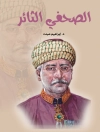A Companion to Television is a magisterial collection of 31 original essays that charter the field of television studies over the past century
- Explores a diverse range of topics and theories that have led to television’s current incarnation, and predict its likely future
- Covers technology and aesthetics, television’s relationship to the state, televisual commerce; texts, representation, genre, internationalism, and audience reception and effects
- Essays are by an international group of first-rate scholars
For information, news, and content from Blackwell’s reference publishing program please visit www.blackwellpublishing.com/reference/
Table des matières
List of Figures viii
Notes on Contributors ix
Introduction 1
Janet Wasko
Part I Theoretical Overviews
1 The Development of Television Studies 15
Horace Newcomb
2 Critical Perspectives on Television from the Frankfurt School to Postmodernism 29
Doug Kellner
Part II Television/History
3 Television and History 51
Paddy Scannell
4 Our TV Heritage: Television, the Archive, and the Reasons for Preservation 67
Lynn Spigel
Part III Television/Aesthetics and Production
5 Television as a Moving Aesthetic: In Search of the Ultimate Aesthetic – The Self 103
Julianne H. Newton
6 Locating the Televisual in Golden Age Television 126
Caren Deming
7 Television Production: Who Makes American TV? 142
Jane M. Shattuc
Part IV Television/The State and Policy
8 Who Rules TV? States, Markets, and the Public Interest 157
Sylvia Harvey
9 Public Broadcasting and Democratic Culture: Consumers, Citizens, and Communards 174
Graham Murdock
10 Culture, Services, Knowledge: Television between Policy Regimes 199
Stuart Cunningham
Part V Television/Commerce
11 Television Advertising as Textual and Economic Systems 217
Matthew P. Mc Allister
12 Watching Television: A Political Economic Approach 238
Eileen R. Meehan
13 Keeping “Abreast” of MTV and Viacom: The Growing Power of a Media Conglomerate 256
Jack Banks
14 The Trade in Television News 270
Andrew Calabrese
Part VI Television/Programming, Content, and Genre
15 Configurations of the New Television Landscape 291
Albert Moran
16 The Study of Soap Opera 308
Christine Geraghty
17 The Shifting Terrain of American Talk Shows 324
Jane M. Shattuc
18 Television and Sports 337
Michael R. Real
19 “Where the Past Comes Alive”: Television, History, and Collective Memory 361
Gary R. Edgerton
20 “How Will You Make it on Your Own?”: Television and Feminism Since 1970 379
Bonnie J. Dow
21 Television and Race 395
Sasha Torres
Part VII Television/The Public and Audiences
22 Television, Public Spheres, and Civic Cultures 411
Peter Dahlgren
23 Television and Public Opinion 433
Justin Lewis
24 Reality TV: Performance, Authenticity, and Television Audiences 449
Annette Hill
25 A Special Audience? Children and Television 468
David Buckingham
Part VIII Television/Alternative Challenges
26 Local Community Channels: Alternatives to Corporate Media Dominance 489
Dee Dee Halleck
Part IX International Television/Case Studies
27 Latin American Commercial Television: “Primitive Capitalism” 503
John Sinclair
28 Television in China: History, Political Economy, and Ideology 521
Yuezhi Zhao and Zhenzhi Guo
29 Japanese Television: Early Development and Research 540
Shunya Yoshimi
30 Change and Transformation in South African Television 558
Ruth Teer-Tomaselli
31 Television in the Arab East 580
Nabil H. Dajani
Index 602
A propos de l’auteur
Janet Wasko is Professor in the School of Communication and Journalism at the University of Oregon. Her many books include Hollywood in the Information Age: Beyond the Silver Screen (1994), Consuming Audiences? Production and Reception in Media Research (1999), Understanding Disney: The Manufacture of Fantasy (2001), and How Hollywood Works (2003).












